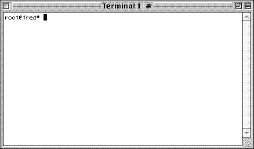
1.0
Introduction
Inexpensive Macintosh computers make robust, easy-to-use, TCP/IP remote filing servers for Docutech production publishers. All that is required is a software package called MachTen, from Tenon Intersystems, on the WWW at http://www.tenon.com, or phone 1-(805)-963-6983.
TCP/IP remote filing service is only available if the Docutech's FTP feature is enabled. Contact your Xerox sales representative, systems analyst or service technician for any questions regarding the process of enabling this feature on your Docutech system.
1.1
MachTen Overview
MachTen is UNIX for the Macintosh. When you double-click on MachTen, you actually launch UNIX and run it just like any other Macintosh program. MachTen provides all of the networking capabilities of UNX, including FTP, which supports Docutech's Remote Filing. DocuJobs uploaded to MachTen are stored as files in a folder on the Macintosh and can easily be backed-up, off-loaded or deleted using the Macintosh.
MachTen is easy to install and easy to maintain. It runs on any Power Macintosh. 32MB of memory and 1GB of hard disk space are recommended for Docutech's remote filing service. Other Macintosh programs can be run at the same time as MachTen.
The following step-by-step instructions detail the process of installing and configuring MachTen and a Macintosh as an inexpensive Remote Filing Server for Docutech Production Publishers. Please review all of the documentation before actually installing the MachTen software and configuring the Docutech. If you have any questions regarding these instructions, contact Tenon Intersystems (1-805-963-6983) for assistance.
2.0
Suggested Hardware and Software Configuration
A custom Docutech Installer package (http://www.tenon.com/products/machten/docutech/) is needed to enable MachTen to act as a Docutech remote filing server. This installer is available for MachTen 4.1.1 (or later). Before proceeding with the rest of these instructions, you will need a suitable configured Power Macintosh, MachTen 4.1.1 and the Docutech Installer package.
MachTen 4.1.1 runs on any Power Macintosh. MacOS 8.0 (or later), 32MB of memory and 1GB of hard disk
space are recommended for Docutech's remote filing service.
Before proceeding with the rest of these instructions, you will need a suitable configured Power
Macintosh, MachTen 4.1.1 and the Docutech Installer package.
3.0
Configure the Macintosh as a Network Server
To provide TCP/IP based remote filing service to a Docutech, your Macintosh must be properly configured as a Network Server. Follow the steps in this section to setup your Macintosh as a server using TCP/IP networking.
3.1
The Energy Saver Control Panel
Network servers should be available at all times. Configure your "Energy Saver" options to not allow the Macintosh to go to sleep.









